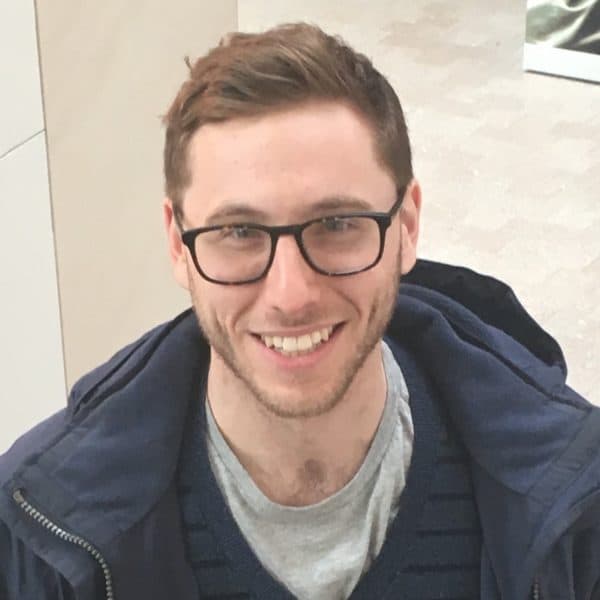Advertisement
Math Students Give Davidson Athletics An Edge
Resume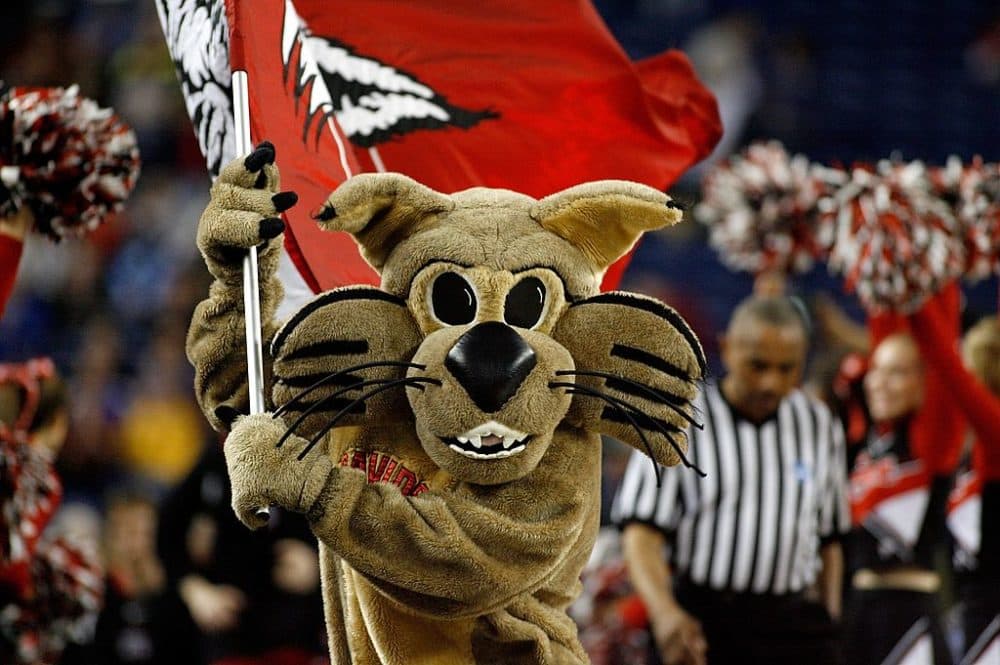
The first time he saw Stephen Curry play basketball in 2006, Tim Chartier didn’t know much about the freshman guard.
"I don’t think I knew his name yet," he says. "I did know that he was a very good math student."
That’s because Tim — or Dr. Chartier, as he’s known around the Davidson campus — is a math and computer science professor. And earlier that fall, the professors in Dr. Chartier's department had discussed promising students in Calculus I.
"We do talk about: is there anyone that we should be encouraging to be a math major?And this young basketball player came up," Dr. Chartier recalls. "And so the first time I ever saw Steph Curry, I turned to my wife and I pointed and I said, 'That’s the kid who’s doing really well in Calc I.'
"I don’t necessarily identify him that way now."
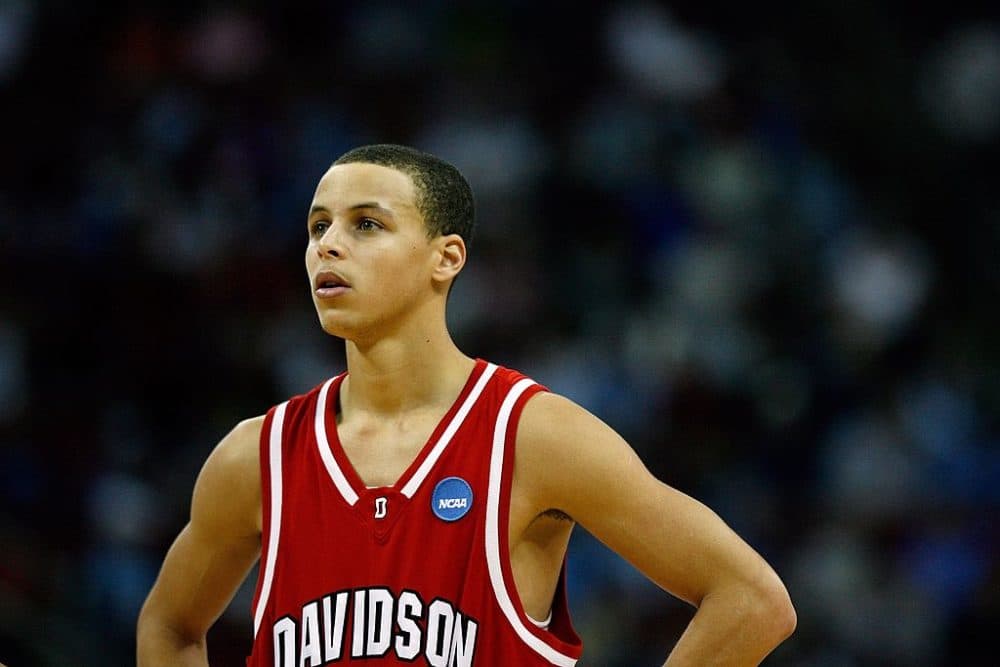
Stephen Curry famously led Davidson to the Elite Eight of the 2008 NCAA Tournament.
But more recently, behind the scenes, Dr. Chartier and a group of math-minded students have also aided the Davidson basketball program.
Dr. Chartier now oversees a student group called "Cats Stats," which uses advanced analytics to help the university's sports teams.
"The manpower we have is extensive," says Matt McKillop, the Davidson men's basketball team's associate head coach. "So when I walk into my office on a Monday, and we've got a game that following Saturday, I'm looking at a piece of paper that they've crafted that basically tells me everything I need to be aware of as I begin my — all the work I'm going to put into watching film and scouting an opponent. So the time they save us is extraordinary."
And helping scout men's basketball opponents is just a small part of what Cat Stats now does to help Davidson. But getting to this point, forging this alliance between the college’s math experts and its athletes, wasn’t so easy.
It required a math professor who is perhaps a bit unconventional.
Dr. Chartier
Seth Kindig started at Davidson in 2010. As a sophomore he took Dr. Chartier’s linear algebra class. Early in the semester, one of Seth’s friends pointed something out about their professor.
" 'Have you ever noticed that he, like, he uses his hands to teach a lot?' " Seth recalls. "Come to find out later that Dr. Chartier is actually a mime in his free time."
"Another thing was — I don't know if he still does, but he at least used to keep, like, a 12 pack of Diet Coke in his office," says Ford Higgins, who also started at Davidson in 2010 and came to know Dr. Chartier. "And, man, he would crush those things."
(For the record, Dr. Chartier says it’s no longer true that he keeps a 12 pack of Diet Coke in his office at all times. He keeps two.)
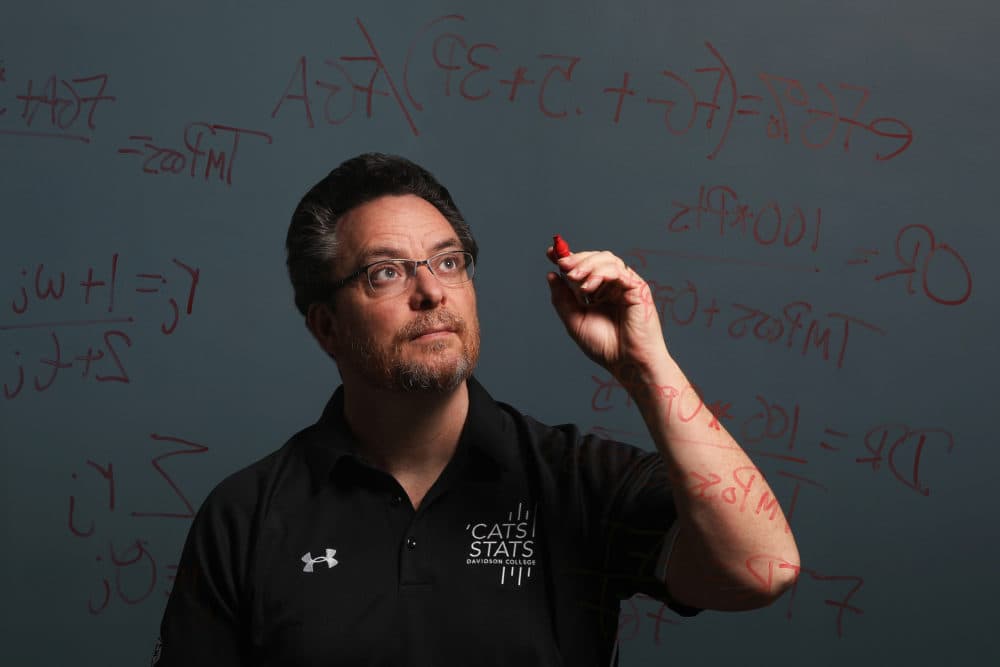
But more important to this story than the miming or the Diet Coke was that, since 2009, Dr. Chartier had been using math to predict the outcomes of the NCAA Tournament. As a homework assignment, he’d even had students build their own models to fill out their brackets
And, for the summer of 2013, Dr. Chartier asked student Seth Kindig to stick around to work as a research assistant on a basketball-related study.
They were trying to use math to figure out which college teams played a similar style of basketball — and Seth and Dr. Chartier wanted to see if the results they were getting made any sense.
So Dr. Chartier reached out to some of the Davidson men's basketball team's assistant coaches.
"One of the nice things about Davidson is we’re a school of 2,000 students. I’m sending an email to someone that I know, and so I will get a response. That doesn’t guarantee interest," Dr. Chartier says with a laugh.
"I was interested in it, but I didn't think too much of it," Matt McKillop recalls. "I felt like ... I was almost doing him a favor."
At the time Matt and the rest of the Davidson staff were like most college basketball coaches: they only looked at traditional stats — such as points, rebounds, turnovers — and they didn’t really know how advanced analytics could be applied to basketball.
Then Seth and Dr. Chartier showed Matt and another assistant the results of their work.
"And they said, ‘Oh, this makes a lot of sense,’ " Dr. Chartier recalls. "And then they said, ‘Oh, you used mathematics for this?’ And we said, 'Yes.' "
"It was eye-opening in a number of ways," Matt says.
The coaches started asking their own questions.
" 'Could you answer this for us? Or this for us?' " Dr. Chartier recalls.
Around that same time, Matt learned that two of the basketball team’s student managers — Miles Abbett and Ford Higgins — were also math majors interested in advanced analytics.
And when the school year began, Dr. Chartier got a visit from Seth, Miles and Ford. They asked if they could work together to help the men’s basketball team.
"I mean, from a professor point of view, I have three students asking if they can do more math with me, so I was like, 'Of course!' ” Dr. Chartier recalls.
But he also cautioned the group: the Davidson basketball program was successful — it’s not like the team needed to make any radical changes. Even after losing Stephen Curry — who, per Dr. Chartier, voluntarily took Calc II, but ended up majoring in sociology — the Wildcats had been back to the NCAA Tournament twice.
"And so I also was very honest: 'Yes, we can try. But to be quite frank, I don’t know if we’ll actually create something that they can actually use. If you’re OK with that, I’m all in,' " Dr. Chartier recalls. "And they said, 'Yes, we want to try.' "
So the group that would come to be known as Cats Stats was born.
Cats Stats ... And An 'Old School' Head Coach
Ford, Miles and Seth started crunching numbers. But they and coach Matt McKillop also needed to get Davidson’s longtime head coach on board.
"He has a pretty old school approach," Matt says. "He was not as quick to be interested in seeing these numbers."
So Matt proceeded with finesse.
"We would give him a little bit and a little bit more, and hopefully we'd have some film to back up some of these numbers with," he says.
But the team's head coach had good reason to trust Matt.
"He may not always make it appear that way, but I think so — deep down I think so," Matt says with a laugh.
See, Matt McKillop has a pretty strong connection with the Davidson head coach. It’s his father, Bob McKillop.
"He’s the kind of guy that will be like, 'Ah, I don’t even want to think about analytics.' But then he’ll plan a practice, and it’ll be designed to emphasize certain things that we talked about," Matt says. "So, one of those things like, he's listening, but he's not hearing you. Or he's hearing, but he doesn't want you to know that he's listening. So it was delicate."
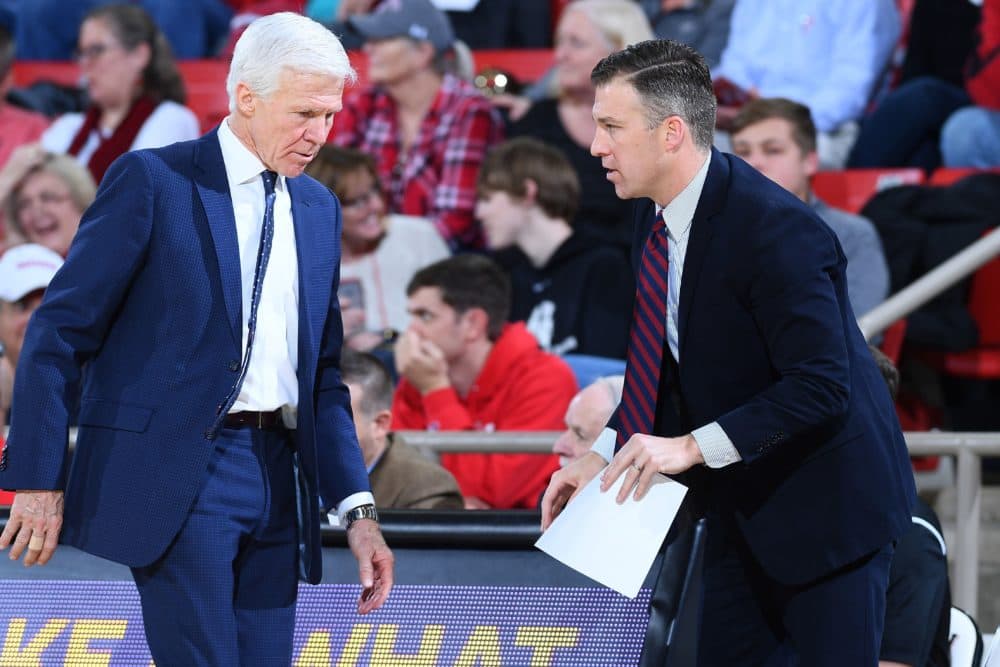
Meanwhile, the three original Cats Stats members faced their own challenges.
Seth studied lineup efficiency, essentially looking at how different combinations of Davidson players fared on the court together.
That meant Seth would have to track which combination of players was on the court at all times — and record the outcome of each possession: made basket, missed basket, or turnover.
"So I was in my dorm room, late at night most of the time. I would watch film of the game with the Excel spreadsheet open, just basically hunched over the keyboard typing in numbers as fast as I could," Seth recalls.
At first, he says, it took him four hours to get through a game.
Ford, meanwhile, wrote up his first scouting report for one of Davidson’s opponents.
The coaches wanted something that would be easy to read. But what Ford turned in was "pretty much just a wall of text."
"It was not good," he adds with a laugh.
But Ford quickly got the format down. And instead of needing four hours to get through the film of each game, Seth cut the process to an hour.
And Matt says his dad began to trust the analytics more and more.
"Once he saw that we were making the right decisions, I think he was pretty bought in to the extent that he possibly could," Matt says.
Becoming Part Of The Team
About a third of the way through that 2013-14 season, the coaches brought Seth and Dr. Chartier to a game in upstate New York. They were in the locker room before tipoff.
"Where the coaches go over the last points of 'This is what we need to be thinking when we play the game,' " Dr. Chartier recalls. "And Seth suddenly turned to me and says, 'My goodness. This is all my work.' "
Everything was going well. But two things began to dawn on Dr. Chartier.
"First of all, I was very aware that the coaching staff depended on the work that we did," Dr. Chartier says. "That created a lot of concern, mainly because all the members of the group were seniors."
And there was certainly no recruiting budget or scholarships to offer for Cats Stats.
Nevertheless, that next year, five new students joined, and the group once again supported the men’s basketball team. From there, the club took off.
In the third year, there were 13 members. They started working with the women’s basketball team, too. The fourth year, there were 30 students.
This year, Dr. Chartier says, there are more than 80 Cats Stats members.
"At this point, we support men and women's basketball, men and women's soccer, volleyball, football, baseball, swimming," he says. "And we started some field hockey work this year as well."
(In case you're wondering how advanced analytics can help the swim team, Cats Stats recently studied the optimal amount of time spent swimming under water after diving into the pool at the start of a race.)
And Cats Stats has now become part of the recruiting pitch to prospective Davidson athletes. When Matt McKillop brings high school prospects to campus, he doesn’t just show them the training facilities and the basketball gym. He’ll introduce them to Dr. Chartier.
"It's unique that we can recruit a player and say, 'Hey, here's a New York Times article about one of our professors, what he does with analytics,' ” Matt says.
I ask Matt if other coaches express jealousy when they learn of Davidson's mathematics help.
"I haven't really seen much jealousy or had too many conversations with coaches about it," he says. "Everybody’s fairly secretive. You know, I have a Cats Stats shirt, but I don't walk around in it when I'm recruiting or around other college coaches. I don't want to draw too much attention to one of the benefits that we have."
Except there’s already at least one basketball coach out there who has the inside scoop on the analytics help the Davidson men’s basketball program is getting.
Seth Kindig — one of the founding members of Cats Stats — now teaches at a high school in Georgia.
"I have taught every high school math. This year, I’m teaching AP Calculus for the first time," he says. "And, kind of most important to me, is that I also am the varsity girls basketball coach."
I probably don’t have to tell you that Seth keeps track of his team’s lineup efficiencies.
This segment aired on January 18, 2020.
